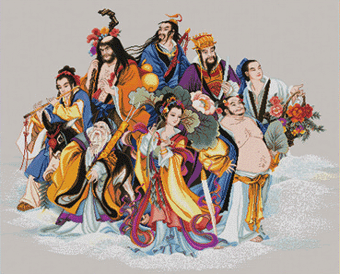by holidayconnections · Published · Updated
 The term ‘Eight Immortals’ represent the imaginary idea of perfect happiness. They also represent all kinds of people—old, young, male, female, civil, military, rich, poor, afflicted, cultured, noble. Also, they are representative of early, middle, and later historical periods.
The term ‘Eight Immortals’ represent the imaginary idea of perfect happiness. They also represent all kinds of people—old, young, male, female, civil, military, rich, poor, afflicted, cultured, noble. Also, they are representative of early, middle, and later historical periods.
The power of each immortal can be transferred to an object and grant life or destroy evil.
[In The Forbidden Kingdom, Jackie Chan plays the character Lu Yan, who is supposed to be one of the Eight Immortals,]
The legend of the Eight Immortals dates back to the Sung dynasty (A.D. 960–1280), some, of the group, seem to have been previously mentioned as Immortals in the Taoist legends. They are also known as the Eight Healers.
The Immortals are:
Children Books on Chinese Myths and Legends
by holidayconnections · Published 01/27/2024
by holidayconnections · Published 01/27/2024
by holidayconnections · Published 01/27/2024